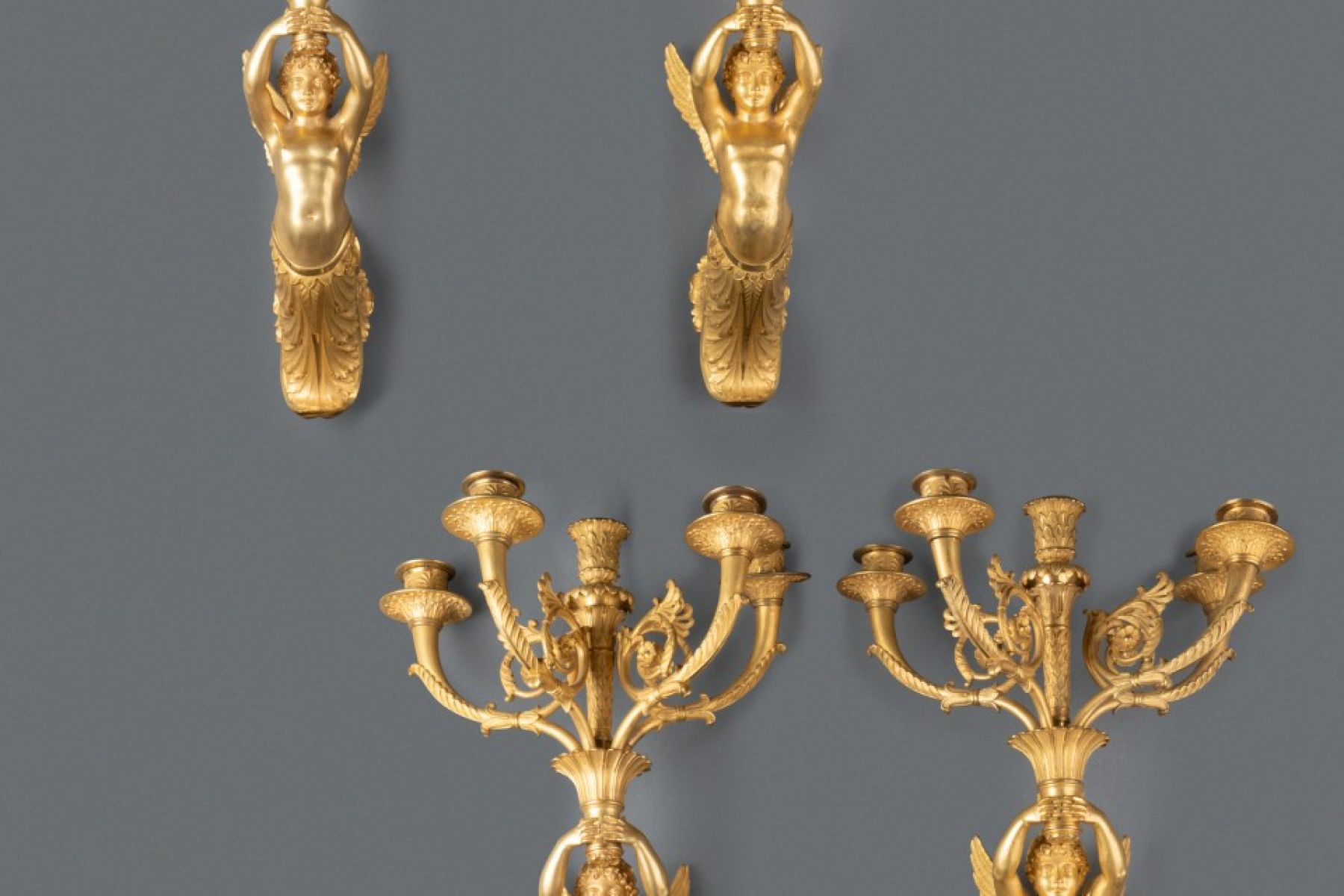Galerie Franck Baptiste
7 quai Voltaire
75007 Paris
FRANCE
Tél. +33 (0)6 45 88 53 58
Monday to Saturday
10h - 13h & 14h - 18h30
- FR
- EN

Wall Lights & Sconces
19th century
André Antoine Ravrio (1759-1814)
1
Wall Lights & Sconces du 19th century
Series of four wall lights with winged children, Paris, Empire period
DIMENSIONS : l. 19.29 .in
MATERIAUX : Ormolu
PROVENANCE : France-Paris
PRICE : 35 000 €
REQUEST INFORMATION
?Rare series of four monumental wall lights in finely chiseled bronze with black and gold patinas.
Model called "aux enfants" representing chubby puttis whose torsos end in acanthus foliage.
Above their heads, two outstretched arms raise a fleuron from which escape a central brand decorated with scales and four bouquets of lights highlighted with acanthus scrolls and palmette volutes.
The underside of the cups finely chiseled with florets and lotus flowers; the bobeches with palmette friezes.
Mercury gilding with double original matte and shiny patinas.
Very good condition, pierced for electrification.
Empire period work attributable to André-Antoine Ravrio in Paris around 1810-1814.
Dimensions:
Height: 49 cm; Width: 30 cm; Depth: 20 cm
Bibliography:
Marie-France Dupuy-Baylet, L'Heure le Feu la Lumière, Les Bronzes du Mobilier national, 1800-1870, Dijon, 2010, pp. 72 and 73.
Anne Dion-Tenenbaum, Les Bronzes d'ameublement du Louvre, Dijon, 2004, p. 272, no. 135.
Jean Pierre Samoyault, Pendulums and furnishing bronzes entered under the First Empire, Musée National du Chateau de Fontainebleau
Hans Ottomeyer & Proschel, Vergoldete bronzen, volume I page 356
Similar models in museums:
Musée du Louvre
Musée National du Chateau de Fontainebleau
Musée du Chateau de Versailles (Trianon)
A pair of sconces signed Chiboust, with a variation in the bouquet, went up for public sale, Hubert de Givenchy collection Christies Paris, September 14, 2021, Lot 1 (35,000 euros).
André Antoine Ravrio (1759-1814)
André Antoine Ravrio (1759-1814) was born in Paris in 1759.
He was a famous bronze art manufacturer who became a master founder in 1777 in Paris.
He set up his own business in 1790 and ran a major establishment under the Empire. Ravrio supplied bronze furnishings for the imperial palaces and for a prestigious clientele including Prince Murat, Louis Bonaparte and Hortense de Beauharnais.
Gifted with a talent for writing, he composed many poems and was the author of several vaudevilles. He was a member of many literary and charitable societies. He created a prize of 3,000 francs to enable the discovery of a preventive measure against the dangers of using mercury in the practice of the profession of gilder on metals.
Antoine Ravrio died in Paris in 1814. He is buried with his adopted son in the Père Lachaise cemetery.